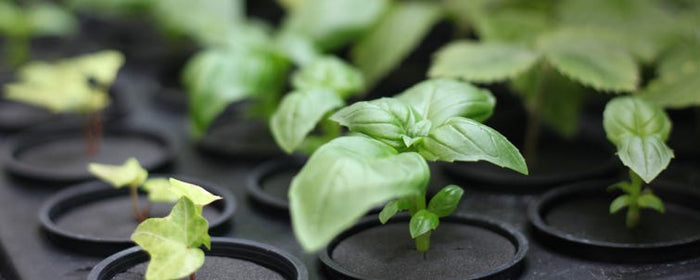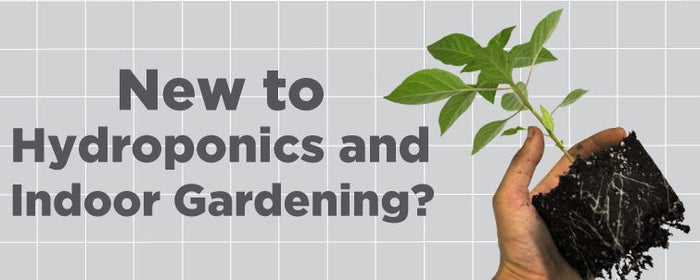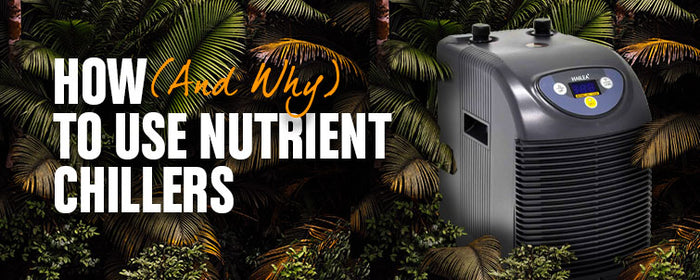
Take the Work out of Watering
It's time to STOP hand watering. Save yourself some pain and do your plants a favour – automate your watering schedule with an irrigation system.
Why use an irrigation system?
- It’s easier
- It’s more precise
- Plants perform better
How to Set up a System
You can buy a system or build your own. Before buying anything, you need to work out what kind of system you want:
Recirculating vs. Run to Waste
Recirculating systems recirculate the nutrient solution that runs out the bottom of the growing media back to plants, until you change it. Run to waste systems don’t – they drain the waste nutrient solution (also known as run-off) away.
While recirculating systems can mean you use less nutrients over a grow cycle, a run to waste system will give you better control of your nutrient solution’s pH and conductivity levels.
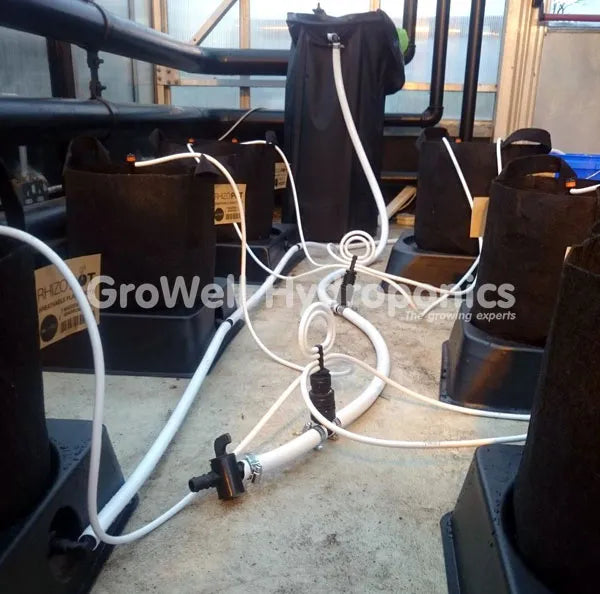
Taken in the Sheffield Greenhouse!
Active vs. Passive
Active irrigation systems use a pump, passive systems don’t – they use gravity or capillary action. It depends on the system design, but as a rule, active systems are more controllable and precise. Passive systems are silent and easier to maintain.
Growing Media
There’s a system to suit every growing method. If you’re growing in soil or coco, you can’t go wrong with a RhizoSystem or AutoPot. You could even go fully hydroponic using clay pebbles or rockwool in a Wilma!
Method 1: RhizoSystem
- Active system
- Run to waste
- For soil & coco (or even Cellmax Growing Cubes)

Taken in the Sheffield Greenhouse!
RhizoSystems are all about run-off. Run-off is the water that comes out of the bottom of each pot after feeding plants.
Without run-off:
- Salts, minerals and nutrients build up in your pot
- Plants will no longer be getting the right nutrient profile
- Plants will be growing in potentially toxic conditions
Getting run-off is also a sign that the growing media is fully watered - unless there's run-off, you may still have dry areas within the pot.
Aim for a 20 – 30% run-off to:
- Reduce the chance of nutrient build ups
- Ensure that your plants are getting the right nutrient profile
- Make the most of the growing media and root system within it
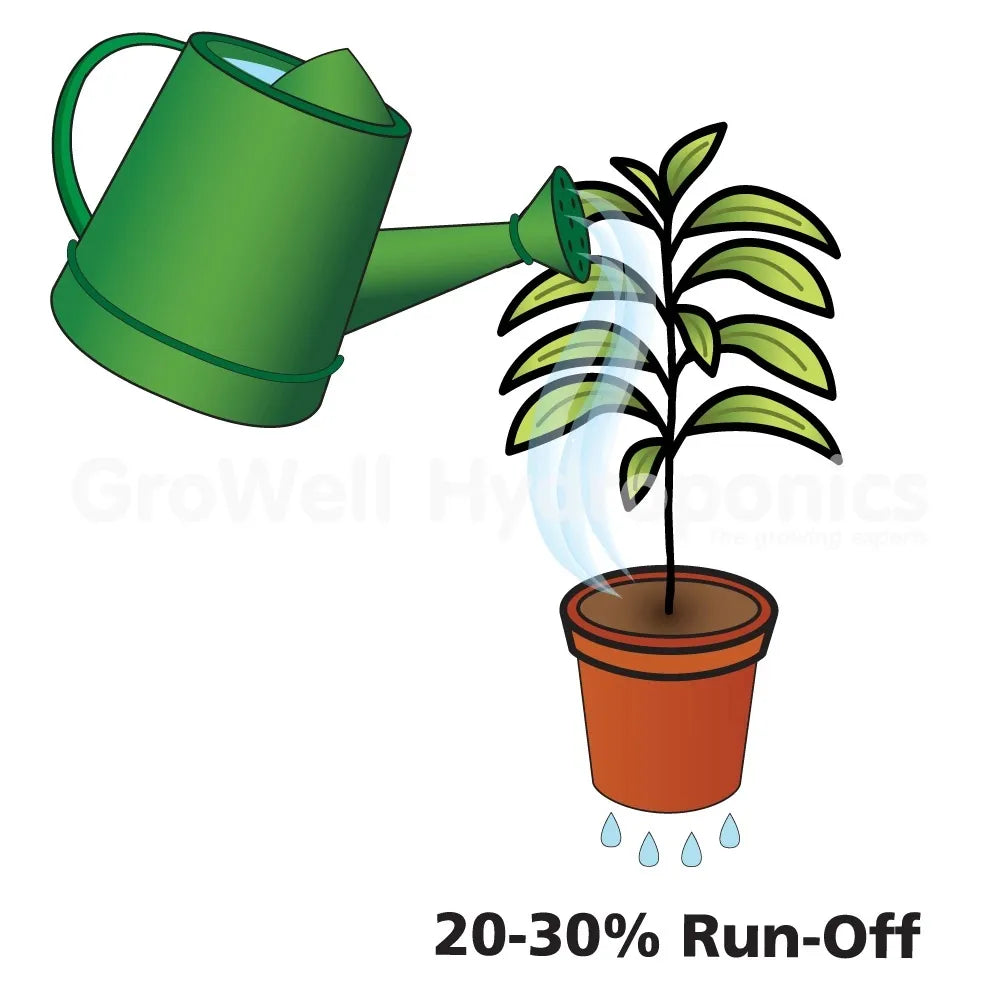
RhizoSystems automatically remove this run-off:
- It doesn’t get reabsorbed by your plants (you don't want reabsorption!)
- You can reach the optimum run-off of 20 - 30% without worrying about oversaturation or root rot
Opt for the drain only system, or choose a drip and drain system to irrigate plants with what they need for optimum run-off.
RhizoSystem Benefits:
- Expandable up to 48 pots (drip and drain) or 72 pots (drain only)
- Flexible layout – position pots how you like
- Allows you to reach optimum 20 – 30% run-off
- Prevents oversaturation, mineral build ups and root rot
- Features our customer favourite, bestselling pot – RhizoPot (drip and drain system only)
- Less work AND better yields!
RhizoSystem Top Tip
-
Use an aerated coco mix (e.g. Canna Coco Professional Plus with 25% Perlite)
More sizes are available for both the drain only and drip and drain RhizoSystems.
Method 2: Wilma Systems
- Active
- Recirculating
- Any growing media
Wilma Systems are by far the easiest system to set up.
Your plants sit over a tank that contains your nutrient solution, this is pumped up and drip irrigated to the plants growing in pots on the top tray. Run-off leaving the pot then runs back into the tank, ready for recirculation.
Benefits:
- Simple to set up
- Supplied with both fast flow & 2L/h drippers to suit all types of growing media
- Low profile for maximum head height
- Compact design for efficient use of space in your grow room

Taken in the Sheffield Greenhouse!
Wilma System Top Tip
- Use with clay pebbles – you’ll be able to irrigate often and have a highly oxygenated root zone
Method 3: AutoPot
- Passive
- Gravity fed
- Great for coco, soil or mixed media

Taken in the Sheffield Greenhouse!
If you want a bigger system that you can just keep expanding, you need an AutoPot. Brill View Farm filled their greenhouse with them!
Nutrient solution isn’t recirculated – it isn’t run to waste either – it just get used by your plants.
How? Rather than drip feeding plants from the top, your plants are passively irrigated from the tray they are sat in via the innovative AQUAvalve.
These trays are connected to a central reservoir – once your plants empty their trays, they’re automatically refilled again.
Benefits:
- Very low maintenance
- Flexible layout – position pots how you want
- Super efficient - No run-off!
AutoPot Top Tip:
Mix perlite or clay pebbles (50%) with coco, soil or rockwool (50%) as your growing media.
Method 4: Do it Yourself
Of course, you can make your own drip irrigation system to suit your own exact needs!
You'll need:
- a tank
- a pump
- drippers
First, You Need a Tank
With drip systems, the bigger the tank, the better. More nutrient solution means you have more time to top up the tank between visits and more room for pH and CF movement if you are recirculating.
When choosing a tank size:
1M2 of plant canopy uses 4-6L of water per day in good environmental conditions. To satisfy this demand, and get around 25% run-off, you need to supply 6-8L per M2 a day.
If you only want to change your nutrient solution once a week, your tank's capacity needs to be at least 56L (8L x 7 days).
Top Tip: If you are recirculating, add an extra 25-30% to allow for pH and CF changes.
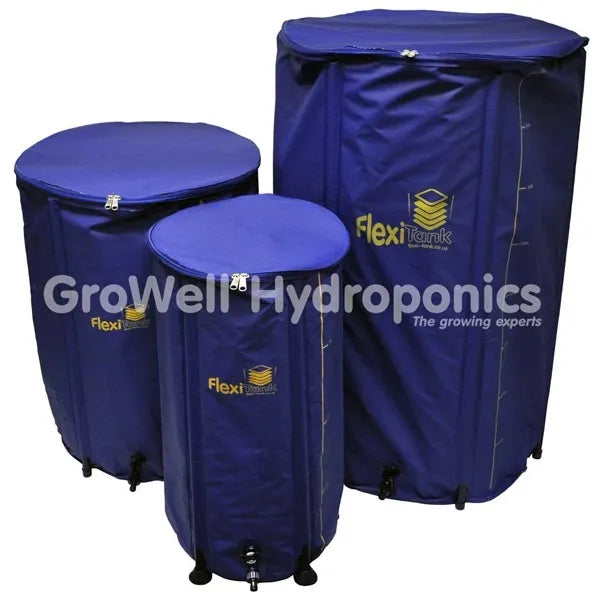
Pick a Pump
You’ll need enough pressure to keep your drippers going. The exact pressure needed depends on lots of factors, such as how high you have to lift the water to feed your plants.
As a rough guide, for low pressure drip systems you need at least 50 Litres of pump action per hour for every dripper.
So a system with 10 drip lines needs a pump capable of moving 500 Litres per hour of water at the very least.
High pressure drip irrigation systems are more complex, come and speak to one of our growing experts in store or start a live chat for more help.

Choose your Drippers
If your media holds a lot of water (like soil and coco) you’ll want a regulated or pressure compensated dripper to provide a precise amount of nutrient solution. This'll help to avoid oversaturation.
If your media doesn’t hold a lot of water (like clay pebbles) you’ll want a faster flowing dripper for a better spread of water and quicker resaturation. Once the plant is established into a media like clay pebbles it's difficult to over-water.
Smaller pots usually only need one dripper each, whereas bigger ones benefit from having two, three or even four.

Build Your System
Option 1. Create a Drip Line:
Some people create a drip line
- Connect 13mm, 19mm or 25mm drip irrigation pipework to the pump
- Run the pipe between two lines of plants
- Secure an end stop
- Punch the pipe with holes
- Secure 4mm drip lines to these holes using 4mm nipples
- Connect drippers to these lines

For lines with end stops, you must ensure the drippers closest to the pump don’t emit more water than those farthest from the pump, as this will lead to uneven growth. For lines with end stops, use pressure compensated, or regulated drippers and ensure the pump has enough pressure to activate all the drippers.
Option 2. Create a Drip Ring:
In low pressure systems you can even up water pressure throughout by creating a drip ring:
• Attach a Tee piece to supply line coming from your pump
• Run the pipe around your grow room
• Connect both sides of the pipe to the Tee piece
• Punch the pipe with holes where needed
• Secure 4mm drip lines to these holes with nipples
• Connect drippers to these lines
Again, you must ensure that there’s enough pressure from the pump to activate all the drippers.
You don’t have to use one piece of drip irrigation pipework – you can cut it where necessary and reconnect it using elbows and Tee pieces so that it runs between all rows of plants.
Don’t forget to use a timer to control your pumps on/off cycle. Watering little and often keeps the medium damp but not saturated, allowing for plenty of oxygen in the root zone.
For the best results… Option 3. Create a Pressure Compensated System
Pressure compensated systems use drippers that open under a minimum pressure and regulate how much solution is emitted.
This is the best approach, especially in larger rooms - precise drip volumes lead to even growth.
